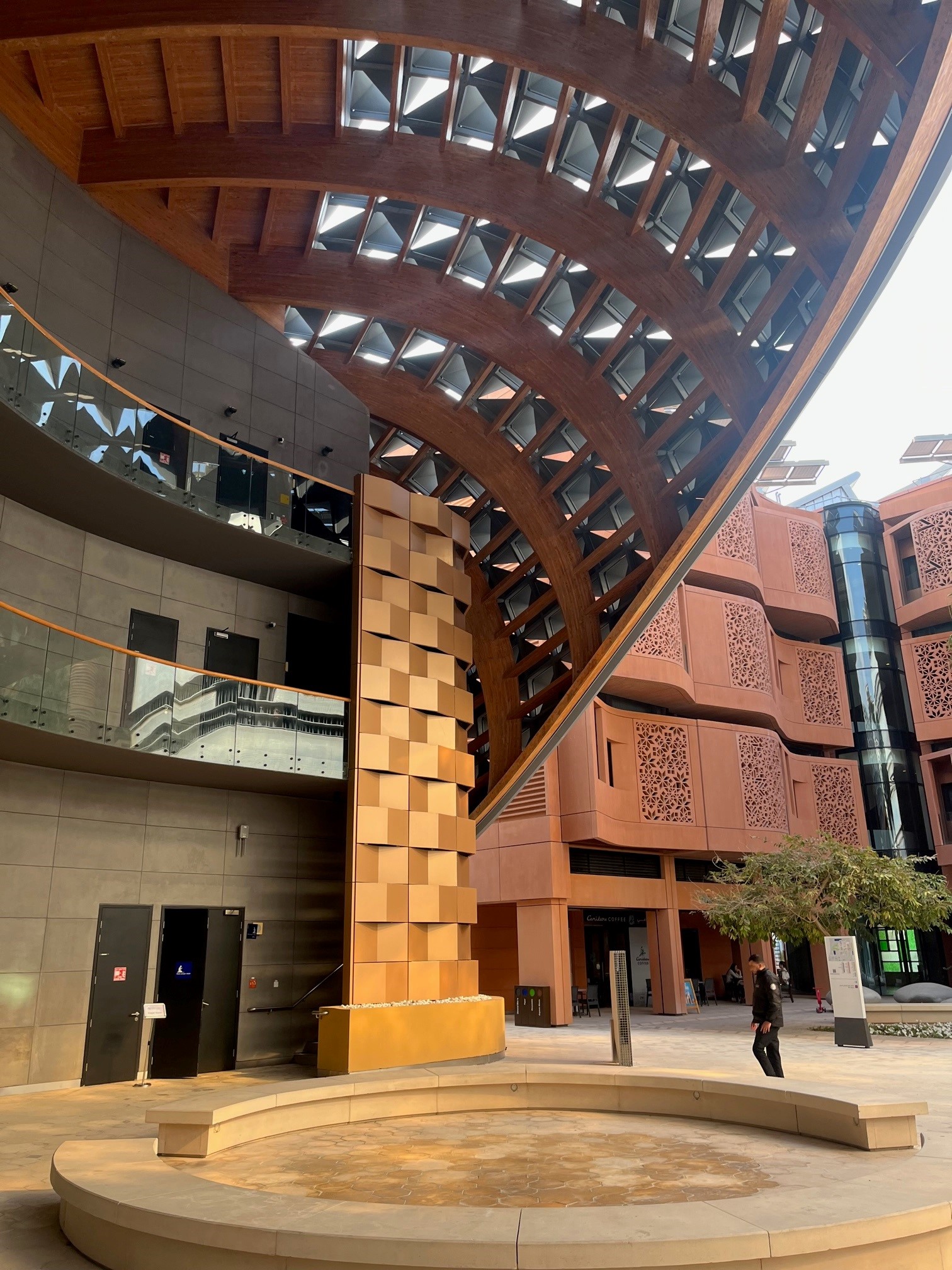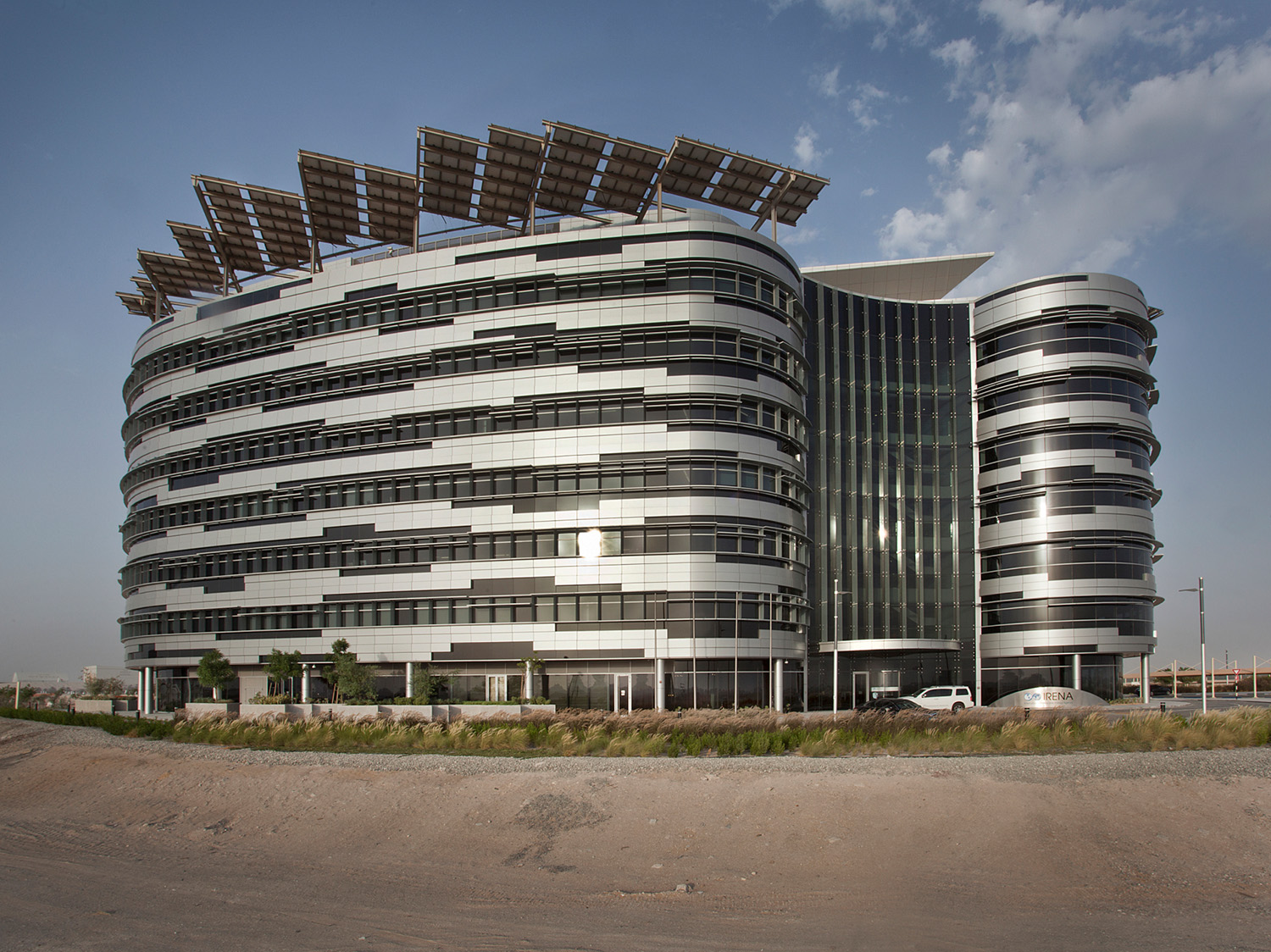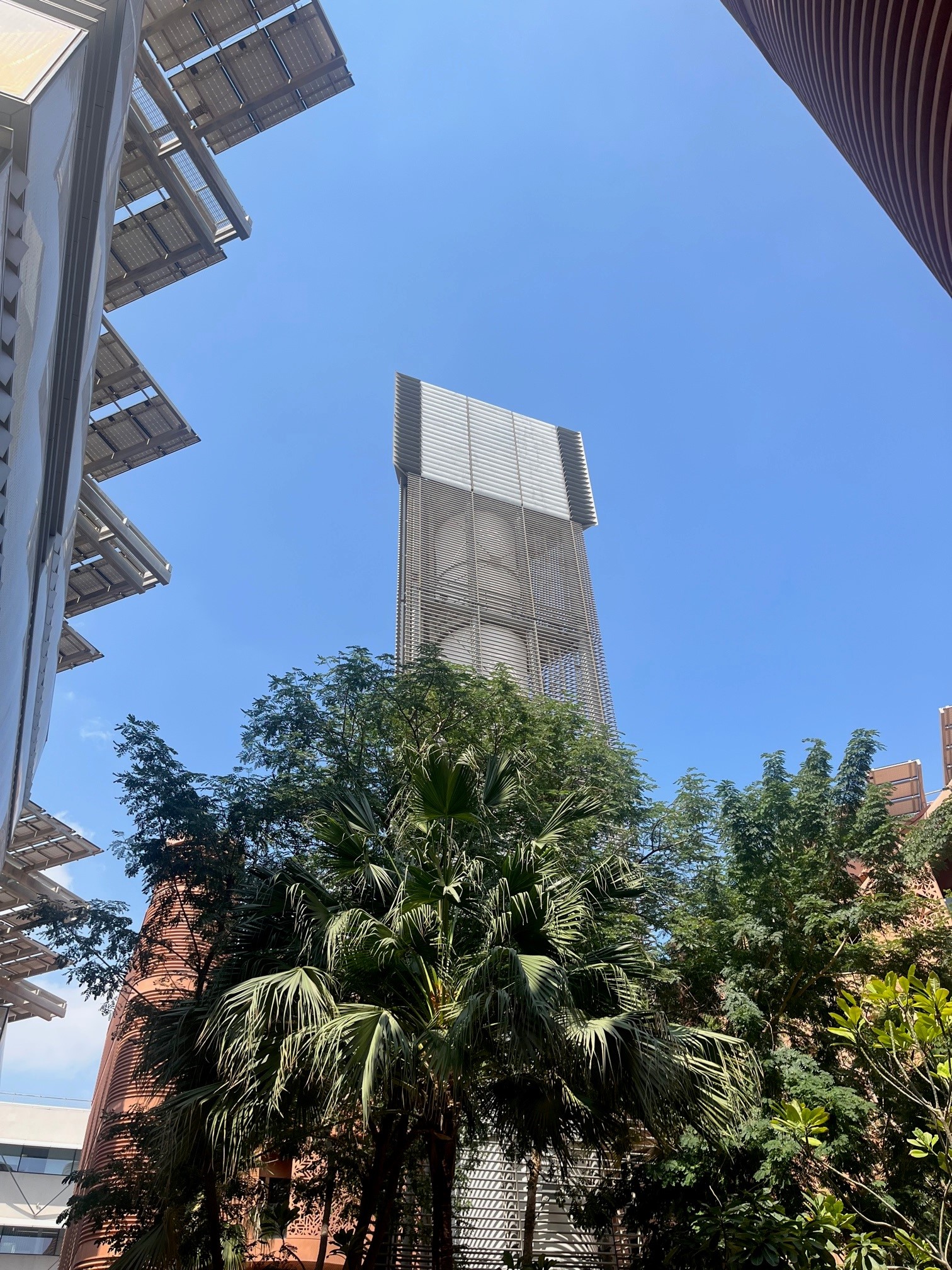The following piece was written by Woods Bagot's Global Sustainability Manager Russell Fortmeyer and republished by Architecture & Design.
Russell Fortmeyer, Global Sustainability Leader at Woods Bagot, visited their Dubai studio for the first time and witnessed firsthand the dramatic urban transformation of the UAE. These are his conclusions.
I finally made it to Masdar. Conceived in 2007 as an ambitious zero-energy innovation district for the future of cities, the original master plan by Foster+Partners envisioned dense, pedestrian-oriented mixed-use blocks spread across a 6-million-square-meter site approximately 20km east of Abu Dhabi’s city center.
My visit was organized around meetings I had in the United Arab Emirates (UAE), and although there are many amazing buildings and landscapes to see in the UAE, the tour of Masdar City was my personal highlight. Of all of the grand projects in architecture from the last 25 years within the sustainability community, I would argue that Masdar is easily one of the most curious and thought-provoking ideas in urban design, architecture, or otherwise. It felt like an opportunity for the world to experiment with a different way to work and live (carless), to test new technologies (building-integrated solar photovoltaics), and to modernize ancient passive cooling strategies (windcatchers). It helped that Abu Dhabi seemed to have unlimited wealth to fund such ventures, of course.

A timber canopy and some of the original Foster+Partners buildings at Masdar City. Photo by Russell Fortmeyer.
No doubt there were many skeptics when the initiative was launched, as the early 2000s were the era of the eco-city—the promise that a New Urbanist approach to planning coupled with renewable energy-based infrastructure and a shift away from conventional private vehicle use as the primary mobility option would solve climate change and point the way to a happy future of continued limitless growth. (See how hard it is not to sound skeptical?) What many eco-cities got wrong was pretty much the fundamental basis for most cities in the first place—an economic need. Renderings of fancy offices and garden apartments do not actually create an economy, nor are empty demonstration buildings actually sustainable, regardless of how much carbon was avoided in their construction.
What I did not expect to hear at Masdar is that all of the green technologies, renewable energy systems, LEED Platinum-certified buildings (the highest concentration in the world!), pedestrian amenities, and operational initiatives around recycling, composting, and water reuse were subject to the same commercial development conditions that would not be out of place in Los Angeles, London, or Sydney. There is no free lunch, even at Masdar. Through strategic partnerships with tenants and a relentless focus on building performance through design and construction, the development team at Masdar City has implemented the master plan’s original vision slowly and steadily to encompass more than 4,000 residents and more than 1,000 organizations and companies.
What is emerging is a sustainable innovation district populated with start-ups, academic institutions, public agencies, and long-established corporations (Siemens, etc.) that are all invested in realizing the UAE’s plans to decarbonize its economy and meet the challenge of the climate crisis while rapidly urbanizing across the region. There are many commercial developments competing for these tenants in the UAE, so Masdar has evolved as it has developed. For example, in 2007, there was an assumption that cars would be less important today and parking demands would slowly trail off. That is not the case, but the potential promise of electric, autonomous vehicles is informing new developments instead.
MC2.
Woods Bagot’s Dubai studio has been fortunate to collaborate with Masdar on several projects, including Masdar City Square, or MC2, a series of commercial office buildings currently in construction in the heart of the development. The anchor building, called the HQ, includes a building-integrated solar PV canopy that dramatically cascades down one elevation to provide sun shading on the glazed façade. On my tour, I glimpsed the initial structural installation for the system, which will eventually generate more energy than the building demands, qualifying it as net-zero energy in operation. Such features are the reason the MC2 project is on track to achieve LEED Platinum, WELL Gold, and Estidama 4 Pearls—a trifecta of green building certifications that benchmark the design against proven global standards.

IRENA headquarters. Photo by Lyndon Douglas.

Etihad Eco-Residences. Photo by Marc Goodwin.
Our built work at Masdar includes the headquarters for the International Renewable Energy Agency (IRENA, completed in 2015, Estidama 4 Pearls), the Etihad Eco-Residences (completed in 2017, LEED Platinum and Estidama 3 Pearls), and the UAE’s first net-zero-energy Eco-Villa (completed in 2017). Each of these projects and many others across Masdar demonstrates how a visionary master plan can be implemented, block by block, tenant by tenant—remaining true to that original vision while evolving the possibilities of the city and architecture each time. For example, our design for MC2 adopted a structural concrete design that reduced embodied carbon significantly compared to what we achieved at IRENA in 2015. Such design moves were not imagined in Masdar’s original plan, but circumstances change and so must architecture.

Masdar’s windcatcher, above the palm trees. Photo by Russell Fortmeyer.
I have often shared Masdar’s outdoor microclimate design strategies in my lectures as an example of how contemporary cities can adopt vernacular approaches to passively heating and cooling buildings and people—the narrow laneways of Masdar certainly do make for comfortable spaces (keep in mind, winters in Abu Dhabi are often climatically blessed). The orientation of openings between and under buildings funnels wind quite effectively. On my tour, I asked Chris Wan, Masdar’s sustainability director, how the windcatchers were working out. Chris explained to us that the windcatchers do not deliver mainly because the wind velocities at Masdar are never high enough to drive wind down the towers. Not everything is nice and easy, but sometimes it pays off to try anyway.
Read the original article here.

